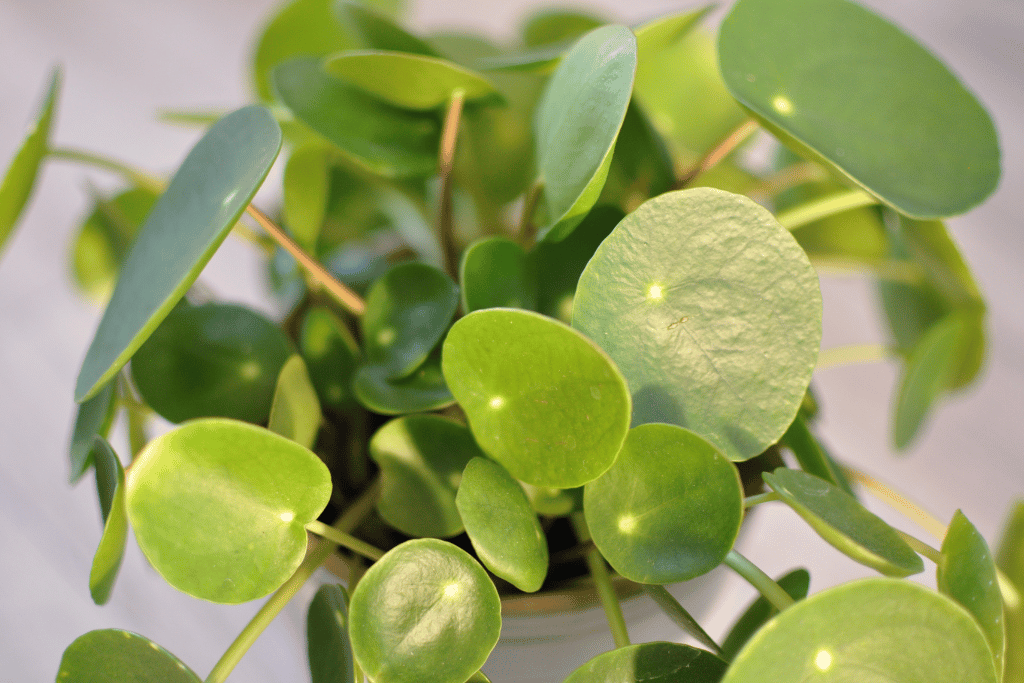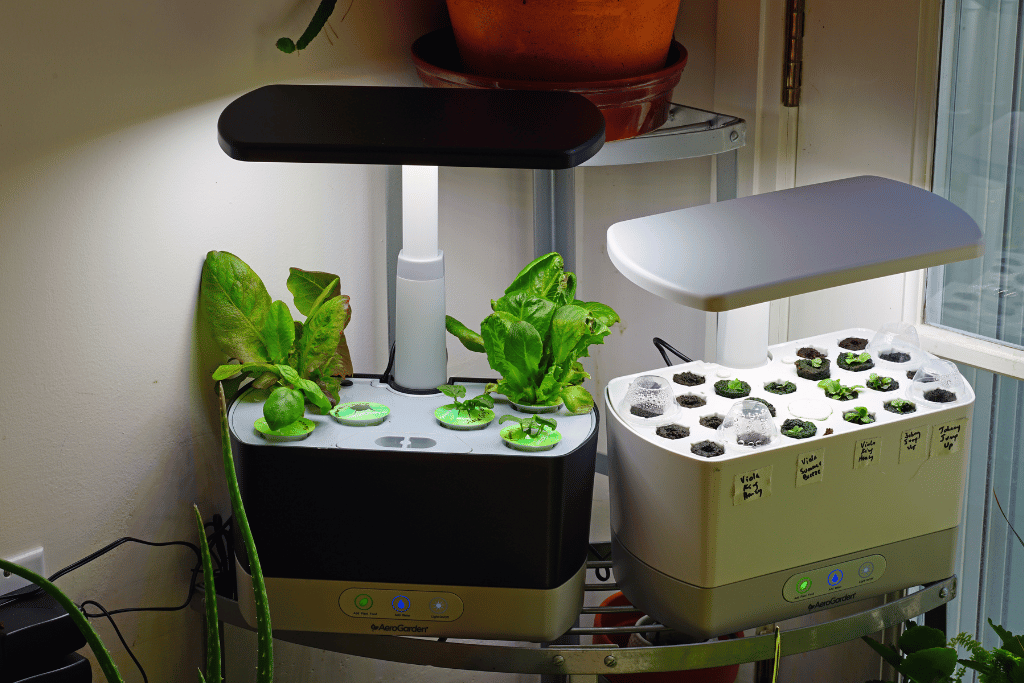Snake plants are among the most commonplace and beloved indoor plants to keep in the home or workplace. They’re low-maintenance (not to mention tolerance of neglect) and have aesthetic appeal, making them the perfect choice for busy folks who’d like to add some life and greenery to their indoor spaces.
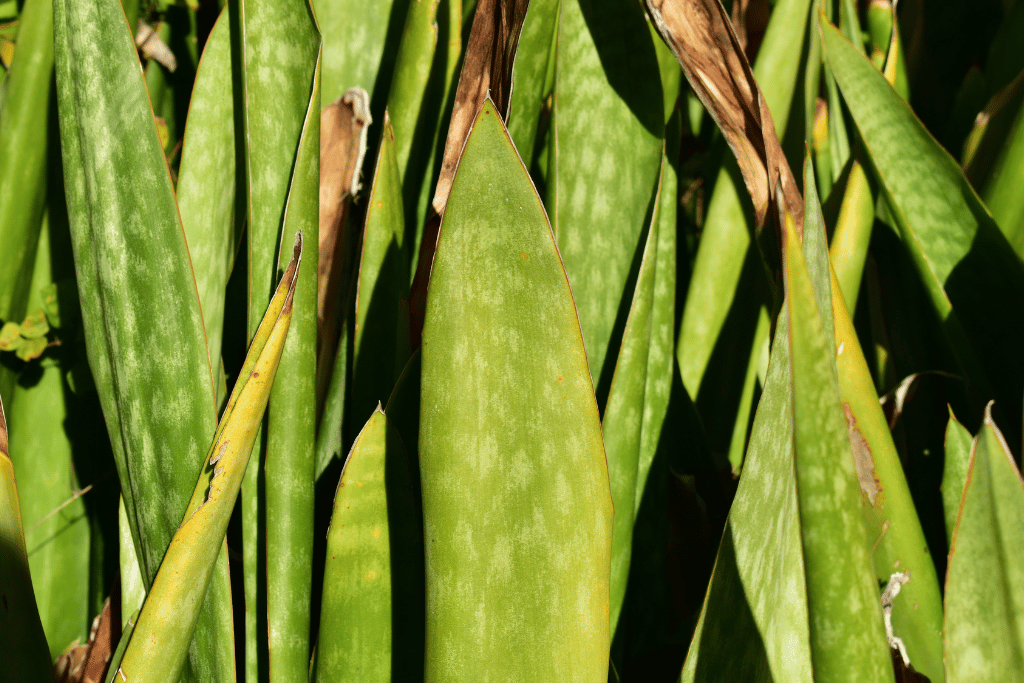
That being said, some basic requirements still must be met in order for them to survive. Under less-than-ideal conditions, snake plant owners may run into the common problem of leaves with a wrinkled or withered look. There are a handful of reasons this might happen to your normally smooth-skinned plant.
Read on to learn about the causes of wrinkled leaves and practical solutions to get your snake plant back on track.
Underwatering – Wrinkled Leaves, Brown Edges and Tips
The most probable cause of wrinkly leaves on your snake plant is dehydration. And this is usually a result of underwatering. Brown tips and edges of the leaves are another sign that your snake plant needs much more water than it has been provided.
Solution
Make sure your snake plant doesn’t go too long without water. Never let the soil dry out completely. It’s true that snake plants hate for their roots to stand in soaking soil, but they are tropical plants that need constant, even moisture.
If the soil of your snake plant has become dry as a bone, it will suffer from wrinkled leaves, brown tips and eventual death. You can reverse this course by immediately watering your plant.
You may be tempted to dump tons of water into the soil but you’ll have to take it slow. The dry soil will take time to absorb the water. Slowly and gradually water all around the base of the plant, evenly distributing it.
The soil will eventually soak up the water. After the soil and roots have been thoroughly watered, let the container sit in its tray for 10-15 minutes. This will give the roots time to soak up the excess and completely rehydrate. Don’t let it sit for too long, you don’t want to drown the plant. Afterward, empty the extra water from the tray and take care of your snake plant as usual.
In the future, pay close attention to the moisture level of the soil. Let it dry out a bit between waterings, but once the top 2 inches of soil dry out, it’s safe to give more water to your snake plant.
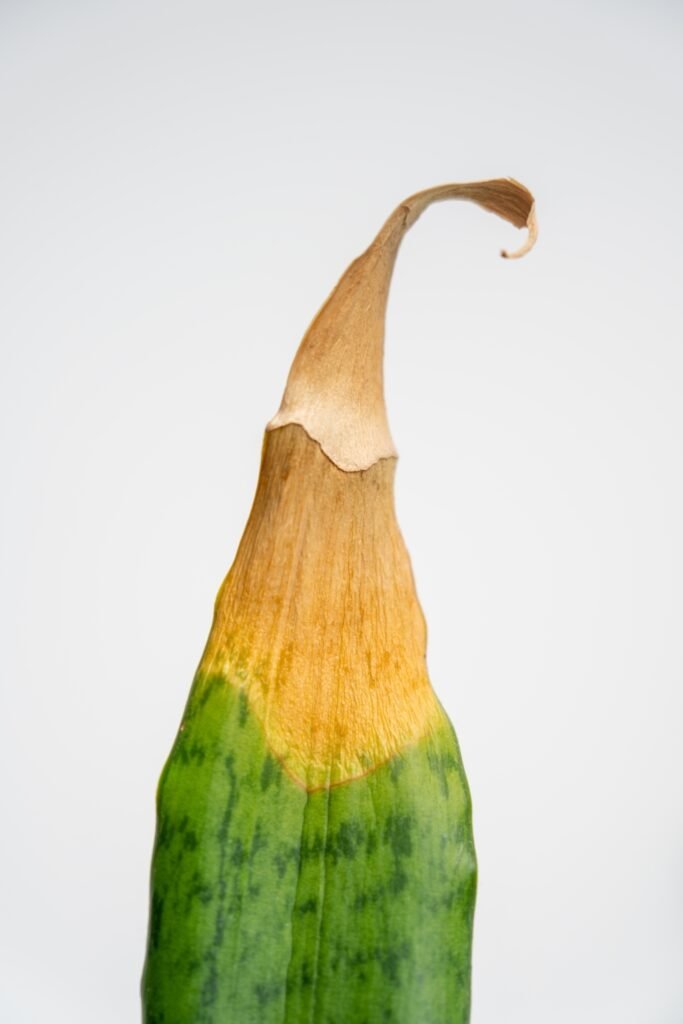
Overwatering and Root Rot – Soft, Yellow Wrinkled Leaves
If the leaves of your snake plant are slightly wrinkled, turning yellow and feel soft at their base, there’s a good chance it’s been overwatered. This is a serious issue for snake plants because damp soil can cause root rot that quickly kills the plant.
Solution
It can be easy to overwater your snake plant. It’s a tropical plant that likes moisture but it’s still important to ensure the roots don’t stand in soaking soil. Infrequent, deep waterings are the best way to make sure your snake plant has enough moisture. Only water once the top 2 inches of the soil have dried out.
If the leaves are dying and rotting from the base and the soil is emitting a foul smell, it’s probable root rot has set in. To try to fix this issue, you’re going to have to repot your plant.
Remove the plant, roots and all from its container. Using sterile scissors or shears, carefully trim off slimy or dark-colored roots. Any infected leaves should also be removed. The remaining roots and plant should be treated with a fungicide to prevent the root rot from coming back and spreading. Effective natural options are neem oil, copper, baking soda and hydrogen peroxide.
After removing the infected plant parts and treating with a fungicide, the plant can then be transplanted into a new, sterile container that’s filled with fresh, well-draining potting mix. If the plant has been properly cleaned up and treated, with a little bit of luck, it will recover without seeing the root rot return.
Check out this article to get into all the finer details of saving your snake plant from root rot.
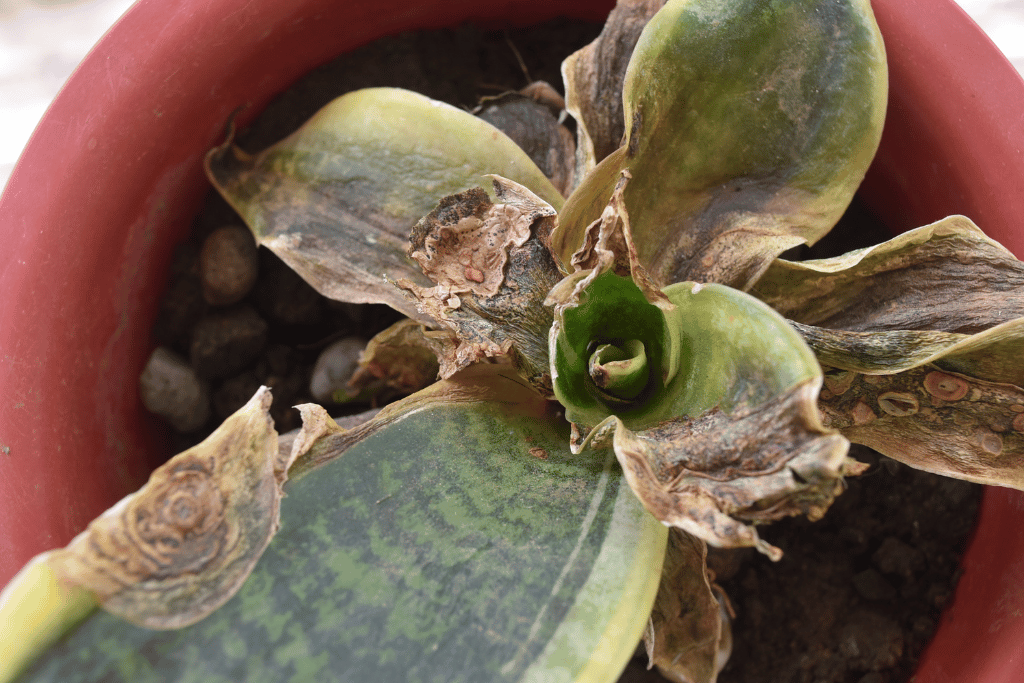
Root Bound – Leaves Are Wrinkled, Drooping and Falling Over
If you happen to notice that the leaves of your snake plant are wrinkly and they start to droop or fall down completely, your plant is more than likely root bound.
Crowded roots will circle the container and slowly constrict and strangle themselves. Their ability to absorb water, nutrients and oxygen will lead to weak leaves that can’t be supported.
Apart from wrinkled, drooping leaves, roots are probably starting to emerge from the drainage holes of their container. Carefully lift the plant and its rootball out of the container to check and see if it needs more space in a larger pot.

Solution
The best thing you can do at this point is to repot your snake plant into a new container. Find a sterile pot about twice the size of the original container and fill it with fresh, well-draining potting mix. To help you choose just the right pot, consult this article on the subject.
If some of the roots have completely circled the pot, a few of them can be snipped and flared out before repotting. This will encourage them to reroute and grow outward, making it easier for them to take up water, nutrients and oxygen.
If there are any baby snake plants, remove them and pot them up into their own little containers. By removing them, you’ll have new plants to grow and share and it will also prevent overcrowding in the new pot.
The roots can be spread wide as you position the plant into its new container. Backfill the pot with soil and firmly stabilize your snake plant into place in its new home. Be sure that the crown of the plant is above the soil line to prevent it from getting damaged and rotting. Tamp down the soil and water your snake plant well.
Overfertilized – Wrinkled Leaves with Brown and Yellow Spots
Because of their easygoing lifestyle and slow growth habit, snake plants do not require much fertilizer. Therefore a common problem is overfeeding. Too much fertilizer has been given if your snake plant’s leaves are wrinkled with brown spots surrounded by yellow discoloration. It’s an awful look and dangerous to the health of your snake plant.
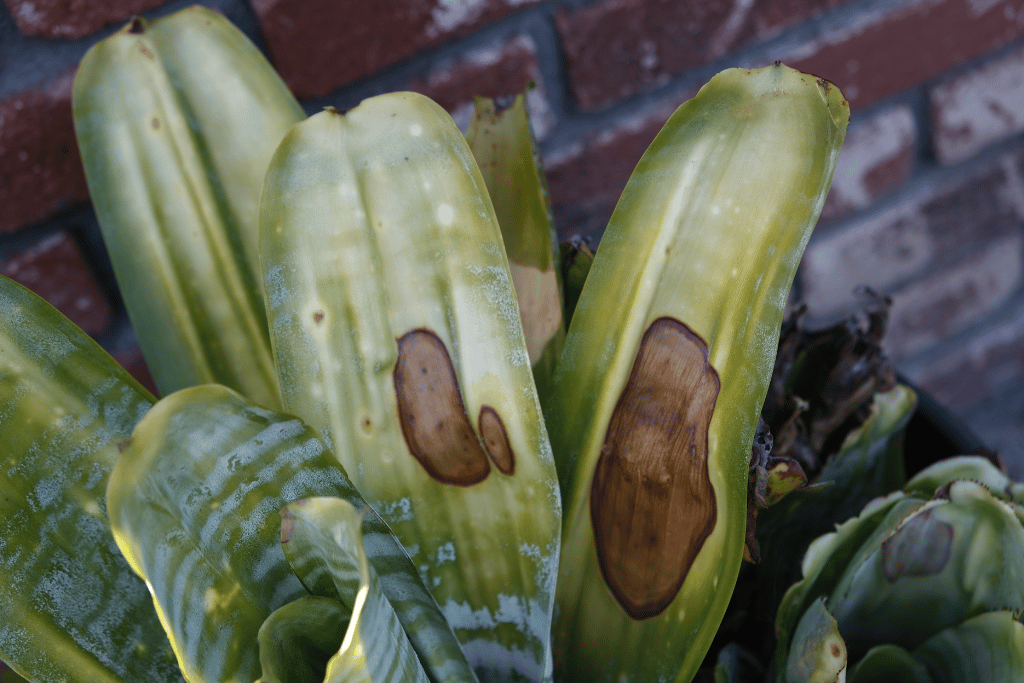
Solution
To help your snake plant overcome fertilizer burn, you can either flush the soil to rinse off excess fertilizer, repot the plant, or both.
To flush your plant, first remove any chalky, white salt/mineral buildup from the surface of the soil. Using filtered water slowly douse the soil and let it drain out. Don’t let your snake plant sit in the runoff, as it will pull back up the excess fertilizer you’re trying to wash off. Repeat the process a few times to cleanse the soil of mineral and salt buildup.
Leaf Burn – Wrinkled Leaves with Brown Tips and Edges
Too much direct light can cause the leaves of your snake plant to burn. The leaves may wilt and start to burn, showing brown tips and edges. Excessively high temperatures can also cause leaf burn. If your snake plant is exposed to lots of bright light or high temperatures, make sure it is properly hydrated.
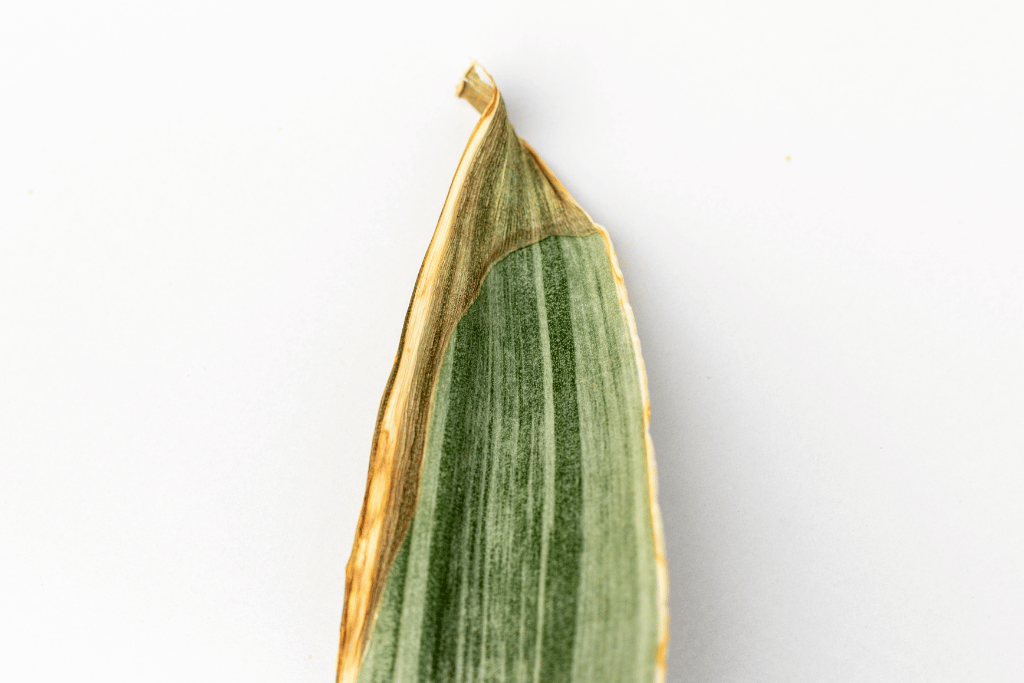
Solution
The best quick fix for this problem is to give your snake plant a good watering and move it out of direct light. Snake plants love the heat, but high temperatures combined with low humidity and dry soil can spell disaster. Make sure your snake plant has plenty of bright indirect light and is kept in a humid and warm environment.
Consider a space near a west-facing window to provide your snake plant plenty of bright, indirect light.
Tips to Keep Your Snake Plant Happy and Healthy
The best way to fix the problem of wrinkled leaves is to prevent it from happening in the first place. Consider these tips to maintain a healthy snake plant and avoid problems in hte future.
Watering
Be judicious when watering. Snake plants would rather the soil be a little dryer than too moist; they’re prone to root rot if kept damp. Wait for the soil to dry out between waterings. Water sparingly in the wintertime, about once a month. During the growing season, spring through fall, water weekly or as the soil dries out.
Environment
Snake plants adapt well to low light or full sun situations. Temperatures between 70 and 90 degrees are ideal. Anything under 50 degrees can damage the health of the tropical plant. Frost exposure will kill it. The plants will bloom when exposed to consistent light and warmth. The white, lily-like blossoms are an exciting contrast against the dark green leaves.
Propagation and Repotting
Use a cactus/succulent potting mix when propagating or transplanting. Snake plants prefer slightly sandy soil mixed with rich organic material.
Aeration of the roots is crucial. When roots begin to creep out the bottom of its pot and the plant looks crowded, it’s time to break apart the root clumps, divide them into separate sections and replant individually. Propagation by leaf cuttings is an effective way to produce more plants; starting by seed is possible but more difficult.
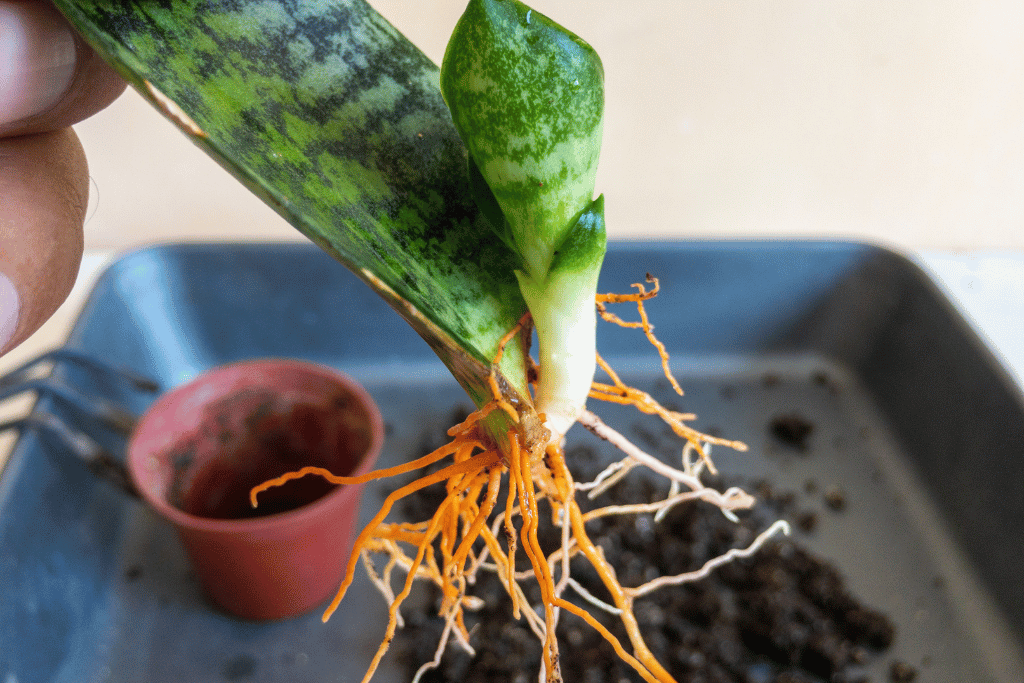
Pruning
Using scissors or a sharp knife, cut leaves off at the soil line when they become overgrown, damaged or sickly. Customize the height and shape of your plant and encourage healthy new growth.
Smooth Serpentine Salutations
And there you have it, a complete rundown of the most common causes of wrinkled leaves on a snake plant.
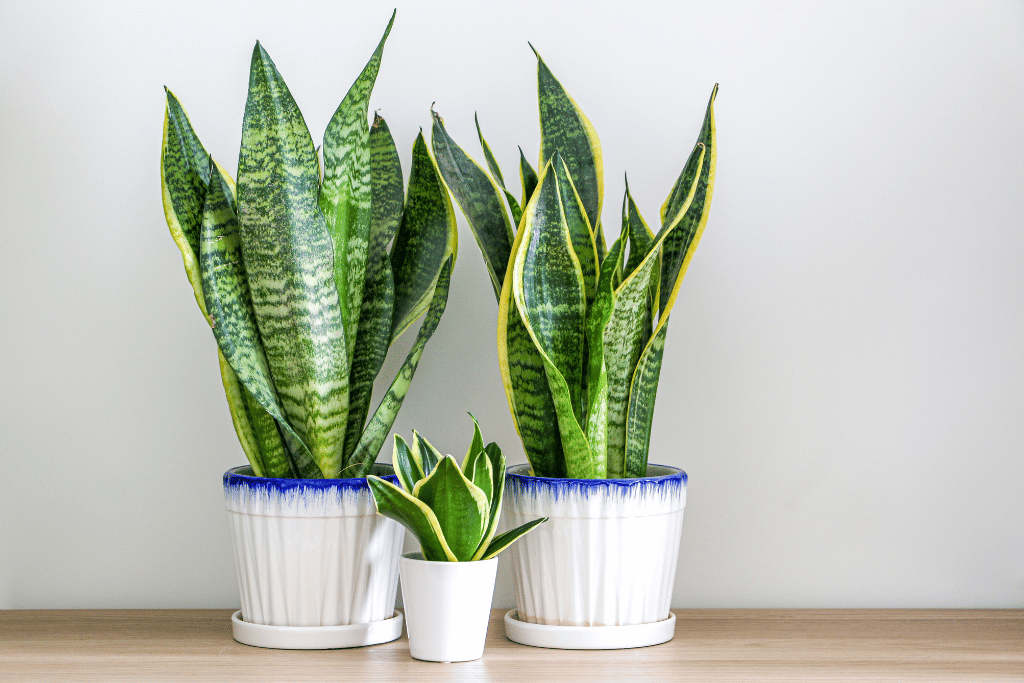
Nobody like to see their plants in a sickly state of stress. And although they are resilient and tolerate many conditions, it’s possible that your snake plant will encounter some problems and begin to wither when exposed to unsuitable environments for too long. The sword and serpent-like leaves just look miserable without their sleek surface and solid color patterns.
If you do find your snake plant in a less-than-smooth situation, consult this article to get it back into a slick and slithering shape.


